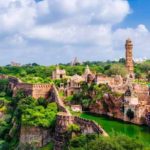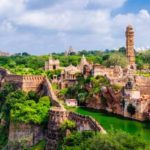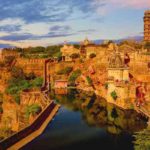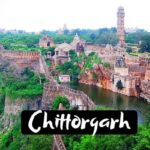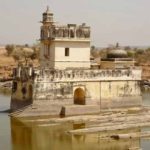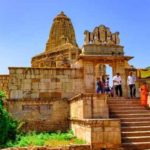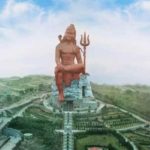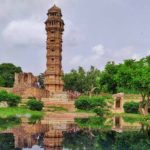Best Time to Visit Chittorgarh is a major city in the state of Rajasthan. It lies along the banks of the Berach and Gambhiri Rivers. Due to its palaces, it is a popular touristic venue. Also well known are the cement factories in Chittorgarh. As marble and granite are extracted from here, it is a centre for the construction industry. The fortress of Chittor is the largest fort in Asia. Many wars have taken place here between Hindus and Muslim invaders. After they were defeated by the Mughals, Rani Padmavati of Best Time to Visit Chittorgarhcommitted mass suicide with other women in the palace. With excitement over the legends, visitors visit the palace.
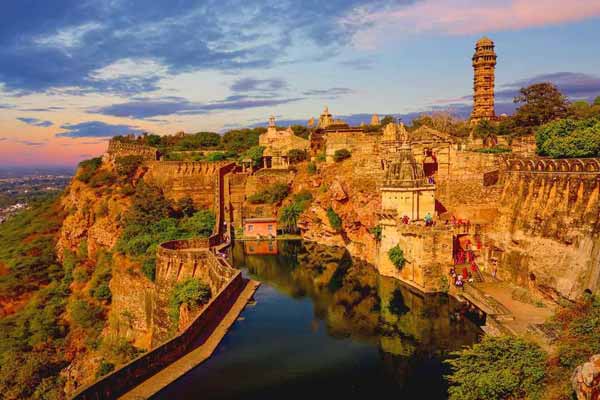
In Chittorgarh, many sandstone temples and monuments dating back to the 15th century have been built. Vijay stambh is a hilltop that must be visited and it is also illuminated at night. The Palace of FatehPrakash is also a museum. Regional sculptures and terracotta figurines are on display. Old coins and other wooden art collectibles are worthy of your visit. GaumukhKund is also a “kund,” meaning a special place to visit is a holy water reservoir. Spring water is flowing here from the cow’s mouth shaped rock. Bassi Wildlife Sanctuary is for lovers of nature. Many species, such as panthers and antelopes, live here. At this sanctuary, many migratory birds remain Best Time to Visit Chittorgarh.
Best Time to Visit Chittorgarh
Best Time to Visit Chittorgarh In the months from October to March, the best time to visit the city of Chittorgarh is. Therefore, if you are planning to go for a comprehensive tour of the city of Chittorgarh, please visit to explore all the aspects of the city during winter.
Winter Season (November – March):
Winter is expected to be the most anticipated season of all. By the beginning of November, the winter months in Chittorgarh are steadily creeping in and going all the way up to March. This glorious city’s minimum temperature stays about 10 ° C and 28 ° C. Thus, often the weather is fun and sometimes cold. It’s the greatest pleasure of going around the city and visitors will enjoy it the most Best Time to Visit Chittorgarh.
Summer Season (April – July):
Up to a mean temperature of 45? And the minimum recorded temperature is 23. Like most destinations in Rajasthan, a trip to Chittor is best planned as far from these months as possible. An April trip is said to be reasonably bearable, but the desert heat is never underestimated! Teej is one of the biggest festivals celebrated with great enthusiasm in Chittorgarh and in the month of July or August.
Monsoon Season (July – September):
In the monsoon months, the rains in Chittorgarh are unexpected. Temperatures differ by 20? Towards 35? During this season, light rainfall occurs in June in particular. A variety of tourists from various parts of the world love to come here with family and friends to experience the delight and enjoyment of the storm. The district’s average yearly rainfall (1977-06) is 762.7mm.
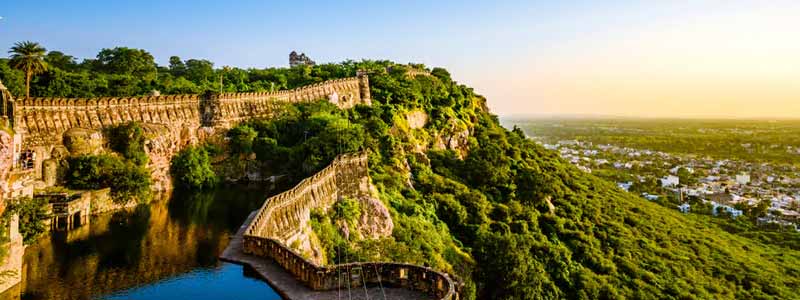
Places to see in Chittorgarh
Best Time to Visit Chittorgarh Due to its rich history and culture, Chittorgarh is a highly significant town in Rajasthan. In the architecture, you can see glimpses of different ages of rulers who ruled over Chittor. There are also many temples that are of great significance to the Jain community. Let’s walk you through some places to visit for a princely jaunt in Chittorgarh. Ideally, during a single trip, you can tick these 10 places to visit in Chittorgarh off your list.
Vijay Stambh
This nine-story house, designed in 1440 AD by Maharana Kumbha to commemorate his victory over Mohamed Khilji, is adorned with sculptures of Hindu deities around it. It is located within the Fort of Chittorgarh. There are about 157 narrow steps leading to the terrace where the balconies offer the entire city a beautiful top-angle view. The tower represents a mesmerising effect when illuminated in the evening, and the camera is worth capturing the view. The top floor contains an image of Padmavati, the Jain Goddess. The term “Allah” was also carved in Arabic by Rana Kumbha nine times on the third floor and eight times on the eighth Best Time to Visit Chittorgarh.
Kirti Stambh
A narrow stairway goes through seven floors of the tower to the top. The tower was designed by a Jain merchant Jeeja Bhagerwala during the reign of Rawal Kumar Singh for the glory of Jainism, which is 22 metres high. Dedicated to Adinathji, the 1st Jain Teerthankar adorned by the nude figures of the Digambars [Adherents of the Digambar sect who do not believe in covering the natural body], At the foundation, it is 30 feet wide and narrows down to 15 feet at the end. Kirti Stambha is older than another tower in the same fort, regarded as the “Tower of Victory” of Vijay Stambha.
Gaumukh Reservoir
More than the fort itself, Gaumukh Reservoir symbolises the exuberance of its homely fort. A deep tank filled by a spring at the edge of the cliff coming from a ‘cow mouth’. It is situated near the temple, and is a total natural beauty, and it is also considered an auspicious practise to feed fish here. One of the fort’s eighty-four water bodies is the Gaumukh Reservoir To this day, it’s packed with water. It is believed that Hindus need to visit the Gaumukh Kund in Chittorgarh to complete their holy journey after visiting different holy places in India.
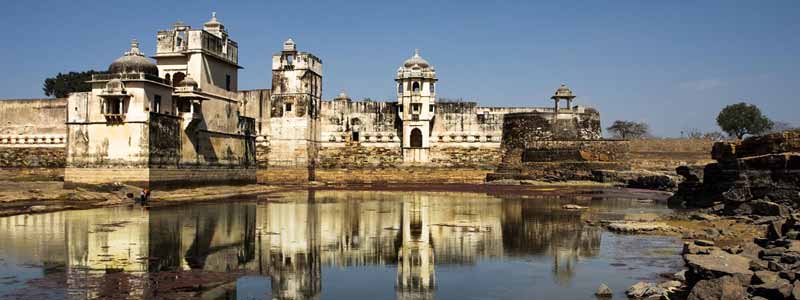
Rana Kumbha Palace
This palace was named after the greatest of the Sisodia, the ruined building of great historical and architectural importance, being the most massive monument in the fort of Chittaur. It is assumed that the palace has underground cellars where Jauhar was committed to Rani Padmini and other women. This place was once the home of Meerabai, a famous bhakti poet.
Padmini Palace
Once upon a time, Padmini Palace was the palatial home of the exquisitely beautiful Rajput queen, Rani Padmini, King Rawal Ratan Singh’s wife. Rani Padmini, revered as an epitome of beauty, was the daughter of Gandharvasen, the ruler of Sinhala, and plays a crucial role in the history of the gallant Rajput warriors. The palace, once the site of an incident between Allauddin Khiliji and Rana Ratan Singh directly responsible for the bettle, is a strikingly feminine building overlooking a fun lake Best Time to Visit Chittorgarh.
Ratan Singh Palace
Near Ratneshwar Talab, Ratan Singh Palace is located and was designed by Ratan Singh. The palace is surrounded by high walls, and two pillared chhatris have crowned the arch at the entrance. There are several rooms, Deorhis, and towers in the town. On the second floor that faces the Talab, there is a darikhana.
Meera Temple
This Lord Vishnu Temple, built in 1449 by Maharana Kumbha, has beautiful idols in its sanctum, mendap, and pillars. Designed to be dedicated to Meera Bai, the Meera Temple is a very popular Hindu temple. The magnificent work of art on the temple attracts a large number of visitors and the temple also represents the architectural Indo-Aryan style that was very popular in those days And it continues to be a part of our cultural heritage.
Both the Meera Bai temple and the Kumbha Shyam temple are constructed on the same level, and there is a carved statue of five human bodies with one head on the outer side of the Meera Bai temple, symbolising the fact that people of all castes and religions are the same and there are no variations.
Nagchandreshwar Mahadev Temple
The Temple of Nagchandreshwar Mahadev is a temple of Lord Shiva located beside the Palace of Rani Padmmini. Situated on the right side of the temple is a garden. Flowers and vegetables are cultivated in this greenhouse. Within the temple, there is enough room so that devotees can worship without any discomfort. In the month of Sawan, the people of Chittorgarh perform the Abhshek of an idol Best Time to Visit Chittorgarh.
Kumbha Shyam Temple
On the request of his wife Meera Bai, Kumbha Shyam temple was built by Rana Kumbha as she devotedly worshipped Lord Vishnu. There is a chhatri, also known as Swami Raidas, which she dedicated to Swami Ravidas. According to a legend, Mother Earth was abducted by a demon called Hiranyakasha and hidden in primaeval water.
Lord Vishnu took the form of a boar called Varaha in order to save Mother Earth, in which the body was of a human and the head was of a boar. In the temple, the idol of Varaha is installed. The temple’s construction is based on Indo-Aryan architecture. The temple consists of ardha mandapa (half porch), antarala (inner compartment), mandapa (full porch), and garbhagrihaha (private chamber). Sculptures of the Hindu Gods decorate the inner walls.
Kalika Mata Temple
“This temple belongs to the 14th century, and it is said that the temple placed across the Padmini Palace was originally a temple that was built here during the 8th century, also called the “Temple of the Sun God. This temple was destroyed after an attack by Allaudin Khilji. Dedicated to Goddess Kali ak Kalika Mata, also known as, This temple is an architectural jewel of the Pratihara period. Thus, not only is this temple a popular religious location, it is also very popular among tourists and lovers of art.
Frequently Asked Questions About Places To Visit In Chittorgarh
Q. What is the best season to visit Chittorgarh?
A. From October to March, winter is the best time to visit Chittorgarh, where the peak season is normally between December and February. The winters are very fun, and the beautiful forts are the perfect time to explore, and there are many temples in the city as well.
Q. What are some must-visit places & things to do while visiting Chittorgarh?
A. All the places in Chittorgarh need to be visited because they are all popular. You’ve got the famous fortress of Chittorgarh, then Rana Kumbha Palace, Kirti Stambh, Museum of Fateh Prakash Palace, Ratan Singh Palace, Vijay Stambh, Temple of Kumbha Shyam, Palace of Rani Padmavati, etc. All these places are nearby and a taxi/car can be hired to drive you around these places.
Q. How many days are required to visit Chittorgarh?
A. Well, you can complete a tour of the whole of Chittorgarh in a day. You can see many other nearby attractions, such as Udaipur, Mount Abu, Jaipur, that can be visited by simply adding a few more days to the journey.
Q. What are the things that you can buy in Chittorgarh?
A. You can explore the local markets while visiting this location. You can buy a lot of tie and dye fabrics, silver jewellery, metalwork, and shoes from markets like the Rana Sanga Market, Fort Lane, and Sardar Bazaar, and the hawkers will show you around the place.
Q. Why is Chittorgarh famous?
A. The magnanimous Chittor Fort that puts this location on the tourist map is home to Chittorgarh. In India and Asia, it is also the largest fort. This is also one of the major sieges of the site (1303, 1535 and 1567-1568) and the Rajput rulers bravely fought to protect their independence.
Q. What are the popular places to see in Chittorgarh?
A. The historically rich town is famous for Chittorgarh Fort, India’s largest fort complex. The fort includes many temples, such as Meera Bai Temple and Kalika Temple, and some of the famous places to visit in Chittorgarh are victory memoirs like Vijay Stambh.
Q. What are the accommodation options in Chittorgarh?
A. Being home to India’s biggest fort complex, Chittorgarh receives a lot of tourist interest. Thus, for travellers, it has a wide range of staying options. There are hotels ranging from budget to deluxe to guesthouses that promise guests a pleasant stay.

